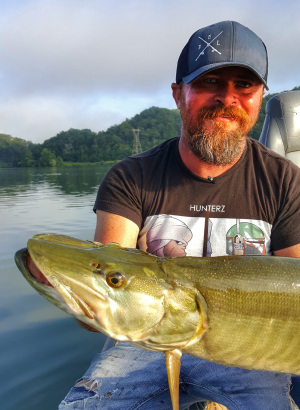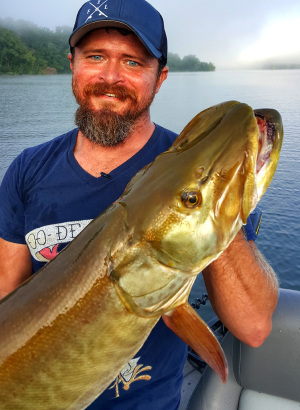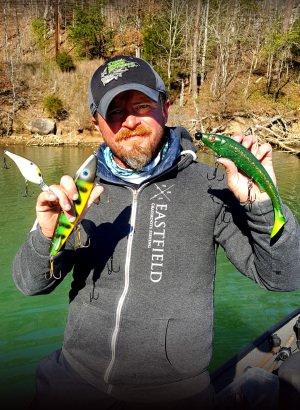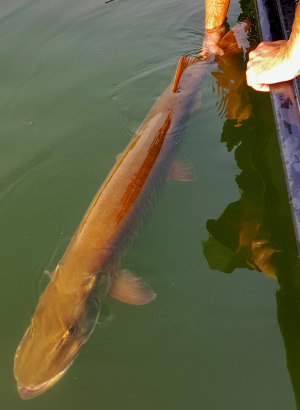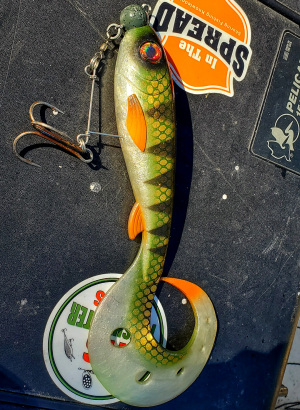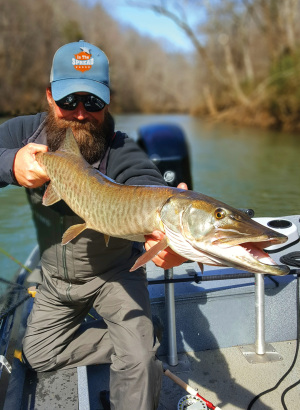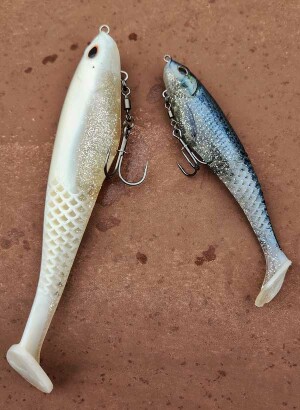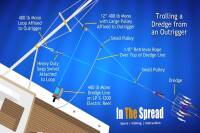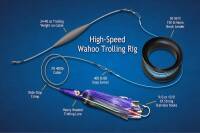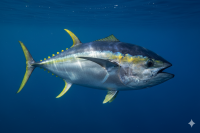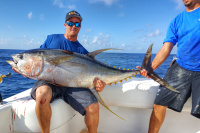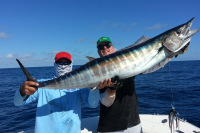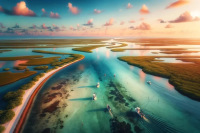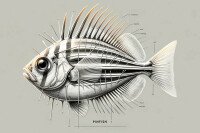Trolling for muskie isn't just dragging lures behind a boat—it's an intricate art form combining science and skill. While some anglers dismiss it as lazy fishing, mastering strategic boat handling, precise lure selection, and seasonal patterns transforms this technique into one of the most effective methods for landing trophy muskies.
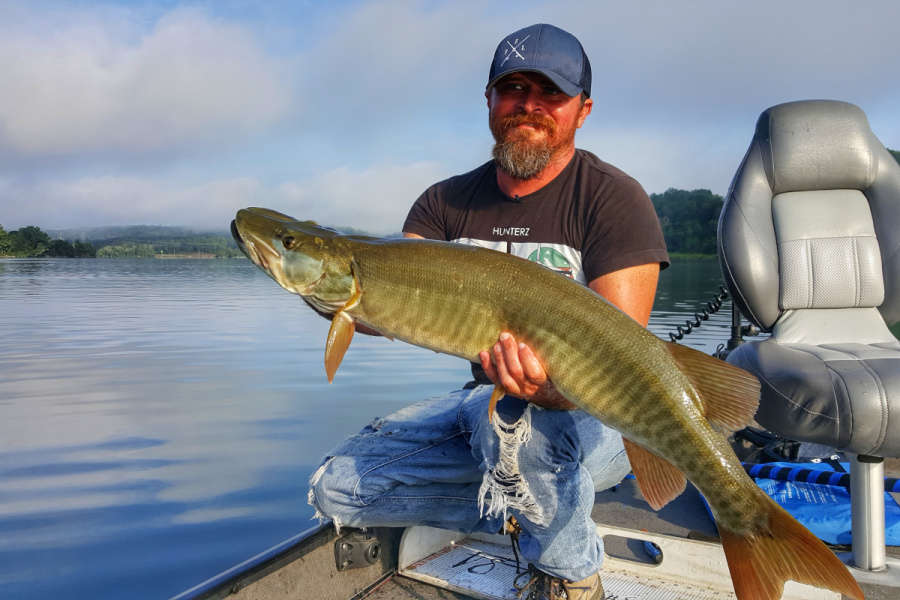
Trolling for Muskie
Mastering the Art of Trolling for Muskie
Most anglers who venture into the world of musky fishing find themselves faced with a pivotal choice – the lady or the tiger scenario of trolling. Some dismiss it as lazy and dull, almost sacrilegious to the sport, while others swear by its effectiveness. Indeed, trolling for muskie requires a scientific approach, but too often, it gets compartmentalized, overshadowing the true artistry behind this fishing technique.
Understanding Muskie Behavior: The Foundation of Successful Trolling
Before setting up your trolling spread, it's crucial to understand the behavior patterns of these elusive predators. Muskies are ambush predators that often inhabit areas with abundant cover. They prefer to station themselves near weed beds and weed edges, underwater drop-offs, rocky structures and reefs, points and breaks, and submerged timber. These locations provide the perfect environment for them to ambush their prey.
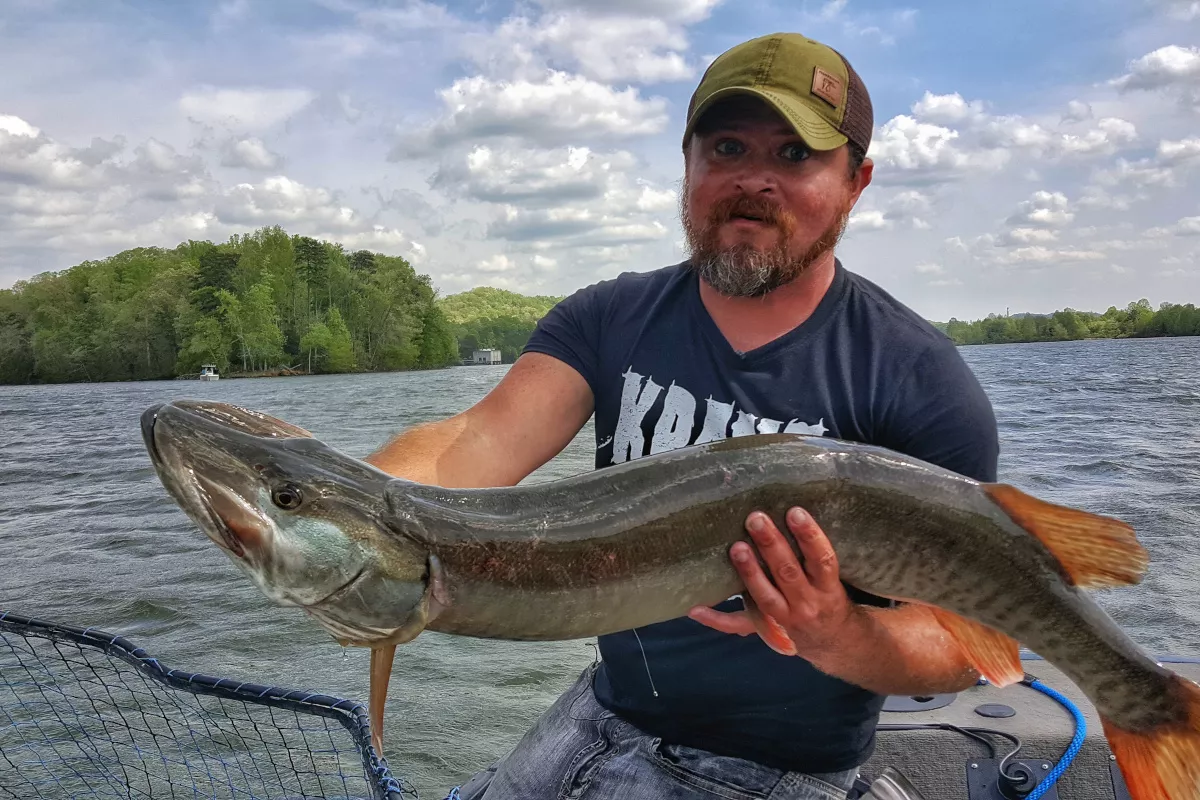
The Science and Art of Muskie Trolling Techniques
Contrary to the misconception that trolling is simply dragging lures behind a boat, effective muskie trolling combines precision boat handling, strategic speed adjustments, and calculated maneuvers to trigger strikes.
Boat Handling Techniques
Cory Allen, a renowned musky fishing guide featured in our In The Spread muskie fishing videos, emphasizes the importance of mastering boat control. Effective trolling requires precise maneuvering through muskie territory. S-turns and zigzag patterns cause your lures to speed up on the outside of turns and slow down on the inside, creating varying speeds that often trigger strikes from following fish. This variation in pace can be the difference between a follow and a commitment.
Trolling in Shallow Waters
While many anglers associate trolling with deep water, shallow-water trolling can be incredibly effective, especially during certain seasons. When trolling shallow weed flats and bays, successful anglers run lures at specific distances behind the boat to avoid weeds while maintaining a consistent speed to prevent snagging. Trolling topwater lures is a super effective method for shallow bays.
Essential Equipment for Muskie Trolling Success
Rods and Reels
Selecting the right equipment is paramount in musky trolling. Heavy-duty trolling rods in the 8'6" to 9' range provide the backbone needed to handle big muskies and the leverage required for proper hook sets when strikes occur at a distance. Quality reels with robust drag systems are better able to withstand the pressure created by dragging sizable lures at depth, ensuring you can repeat successful patterns once they're established.
Lines and Leaders
The connection between you and trophy muskie requires careful consideration. Mainline selection typically centers around 80-pound braided line like Seaguar Threadlock, which provides the strength to handle powerful fish while maintaining sensitivity to detect subtle changes in lure action or bottom contact.

Advanced Trolling Spreads and Presentations
Water Column Coverage
I cannot emphasize enough the importance of spreading lures throughout the water column to maximize your chances of locating active fish. This comprehensive approach involves running one lure halfway down for suspended fish while positioning another near the bottom for deep-hugging muskies. During fall, after turnover, focusing on multiple depths becomes particularly important as fish may suspend at various levels in the water column.
Prop Wash Techniques
There's something uniquely effective about running a lure in the prop wash. The turbulence created by your motor creates a distinct vibration and flash pattern that can trigger reaction strikes from following muskies. When setting up a spread, consider placing one rod directly behind the boat to take advantage of this phenomenon.
Seasonal Trolling Strategies
Fall Trolling Tactics
Fall is prime time for trophy muskie trolling as fish feed heavily to prepare for winter. During this season, larger profile lures match the fattened-up baitfish that muskies target. Focusing on mud basins and deeper structure where fish congregate during this time of year can lead to exceptional catch rates.
Summer Trolling Approaches
During summer months, muskie location and behavior create different trolling opportunities. Targeting weed edges and drop-offs adjacent to shallow feeding areas can be productive, especially during early morning and evening hours when fish move shallow to feed. Increased trolling speeds in warmer water match the more active feeding nature of summer muskies.
Lure Selection for Muskie Trolling
Types of Effective Trolling Lures
The arsenal of effective muskie trolling lures continues to evolve, with several categories proving consistently productive. Spinnerbaits create vibration and flash that's ideal for targeting suspended fish, while Tim Woodyard's custom gliders offer unique action that triggers strikes from even reluctant followers. These specialized presentations make a significant difference when fish have seen common offerings.
Color Selection
Matching your lure colors to water conditions and forage base significantly increases your odds of success. In clear water, natural perch patterns and realistic baitfish colors typically outperform brighter options. Stained water calls for more visible presentations, with chartreuse and red/orange combinations cutting through the reduced visibility.
Understanding the dominant forage in your target water helps narrow color selection further. Using silver/white patterns in cisco lakes and gold where walleye are the primary forage creates presentations that match what muskies are accustomed to targeting. This attention to detail can be the difference between a following fish and one that commits to striking.
Proven Triggering Techniques
Successful muskie trolling often hinges on triggering hesitant followers to strike. One particularly effective technique involves bottom contact – when a lure bounces off the bottom, immediately point your rod tip up and momentarily slow down, then speed up and rip the bait forward. This erratic action often triggers reaction strikes from following fish.
Embrace the Art of Trolling
Trolling for musky is an art form that blends scientific knowledge with angling skill. By understanding musky behavior, selecting the right equipment, and employing strategic trolling techniques, anglers can significantly increase their chances of success. The approach combines precision, patience, and adaptability – hallmarks of all successful muskie anglers.
Whether you're a seasoned musky hunter or new to the sport, embracing the art of trolling will undoubtedly enhance your fishing experience and potentially lead to the trophy catch of a lifetime. Remember, the debate between casting and trolling need not be contentious – both have their place in the musky angler's arsenal, and the most successful fishermen master both approaches.
For an in-depth visual demonstration of these techniques, check out our In The Spread musky fishing video on Trolling for Muskie, featuring expert guidance from Cory Allen on setting up an effective trolling spread, rod positioning, boat handling, and advanced trolling concepts.
Seth Horne
In The Spread, Chief Creator
Login
to leave a review.
User Reviews
There are no reviews yet.Complete Dredge Pulley Setup Guide
Saltwater
12.28.2020
High Speed Wahoo Trolling Rig
Saltwater
09.07.2018
Best Bait for Wahoo
Saltwater
12.30.2023
Pinfish - A Comprehensive Guide
Saltwater
11.10.2023
0

